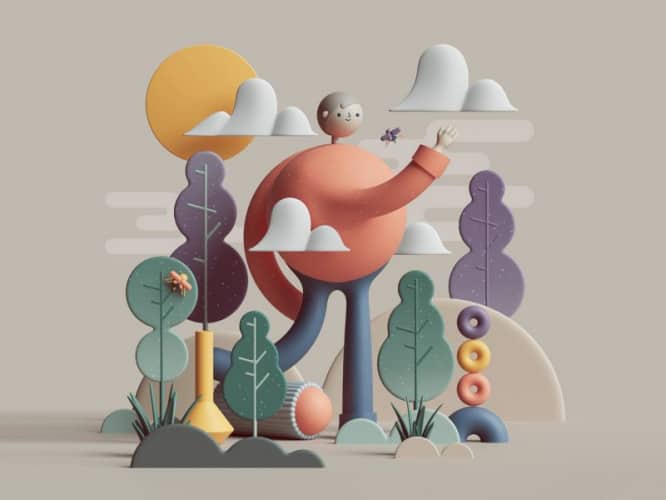Educational program. Who is an art director and what does he do?
There is an opinion that becoming an art director is the cherished dream of any designer, especially a beginner. And if you have achieved this goal, then you have reached the top of the career Olympus. But in reality, the art director is not only about design and experience with big brands, but also about management.
So who is an art director? The most important designer? The most important manager? Ideological inspirer? Censor? In our today’s educational program, we are trying to answer many questions about this profession.
Who is he?
First, let’s turn to the all-knowing “Wikipedia”. There you can find the following definition of an art director: “the head of an artistic or other creative department or media project:“ the project’s implementer ”. Obviously something creative and vague.
Let’s start looking for a definition with the translation of art direction: art – art, direction – direction. We offer this option – art director:
- on the one hand, carries out creative management of design and branding projects – mainly in their visual part;
- on the other hand, it manages people and work processes.
Creative people also (and sometimes in particular) need discipline, clear planning and a unified system in their work. The art director oversees all this.
And what does he do at all?
The art director takes part in all stages of the work and controls the process, has a general vision of the result, leads the creative team and participates in communication with the client. Its task is to help formulate the message for the target audience and visually package it so that it is correctly perceived.
The main task of the art director is not to let the visual interpretation of the idea get lost or distorted. In this sense, an art director is a big brother.
Of course, even without the art director, the team will be able to deliver the result, but then there will be no critical view from the outside, no constructive art criticism, no view from the point of view of client tasks.
What should an art director know and be able to do?
In this profession, it is important to be a versatile person. It is clear that in different companies the terms of reference of an art director differ, but the basic skills remain.
- Usually an art director is good at marketing and management. In the process of working on a project, the art director needs to simultaneously think about the beauty of the design and its relevance to the goals of the brand.
- Another important skill is psychology and diplomacy. Psychology – to show empathy and timely recognize a flammable situation in a team, at the right time to go out to a conversation with a person and get a response. Diplomacy is to communicate with the client. In this sense, an art director is a translator between a client and a designer. He is the first to convey the benefits of a particular solution in terms of the effectiveness of problem solving. The second helps to correctly interpret the often ambiguous comments of the client, so that later they turn into concrete improvements.
- The obvious skill is watching. It is important for an art director, like no one else, to analyze cases of different levels, follow competition and festival projects, keep abreast of all trends and current topics, not only in design, but also in media space, art, and socio-cultural context.
All this is important and necessary in order to see good ideas in time and monitor their implementation, understand which solutions will work and how you can achieve this or that result. - Nowhere and without technical savvy. It is impossible to control the work process without knowing its intricacies from the inside. If the art director did not have his own experience of working with the necessary programs, it would be difficult for him to estimate how long it will take at different stages of work, which ideas are possible to implement and which are unrealistic. In addition, sometimes an art director has to intervene in applied work: it’s easier and faster to fix something on his own than to go into long explanations. But this should not be carried away: the main function of an art director is still not a design one.
- Finally, team management is an important separate skill. An art director should not only be well versed in design, but also be able to manage a team, plan resources, build workflows from concept development to presentation to a client and implementation. A good art director knows how to clearly formulate a task, how to distribute work among employees, how not to disrupt deadlines, taking into account all potential force majeure. It’s just that a strong designer cannot be an art director, because to implement a project you need to coordinate the work of an entire team.
Is the art director’s dream a designer’s dream?
Not all creative professionals dream of becoming art directors. This work requires diverse communication and great responsibility. This is not to everyone’s liking and power.
There are designers who are passionate about their work, but do not want to communicate and lead a lot. And some quickly burn out from creativity and prefer to do routine things – becoming, for example, technical designers. All of them can develop as narrow specialists in their field. Art direction is not a universal dream, but only one of the vectors of growth for a designer.
Afterword
Modern creative business is all about visual communication. There is no brand and identity – consider that there is no company. Therefore, branding agencies, design studios, digital and advertising agencies are in demand today. And every creative team needs an art director – an intermediary between the client, the audience, and the creative team.
But you shouldn’t think that the work of an art director is a type of free creativity, where every day you look at beautiful pictures and comment on them from the “like / dislike” position. Art director’s work is responsibility both for the team and for the result.
Source: DEZA


